Porcelain Jasper is a captivating variety of jasper, a form of chalcedony, known for its striking colors, intricate patterns, and porcelain-like appearance. This unique gemstone is highly prized among collectors and jewelry enthusiasts for its aesthetic appeal and metaphysical properties.
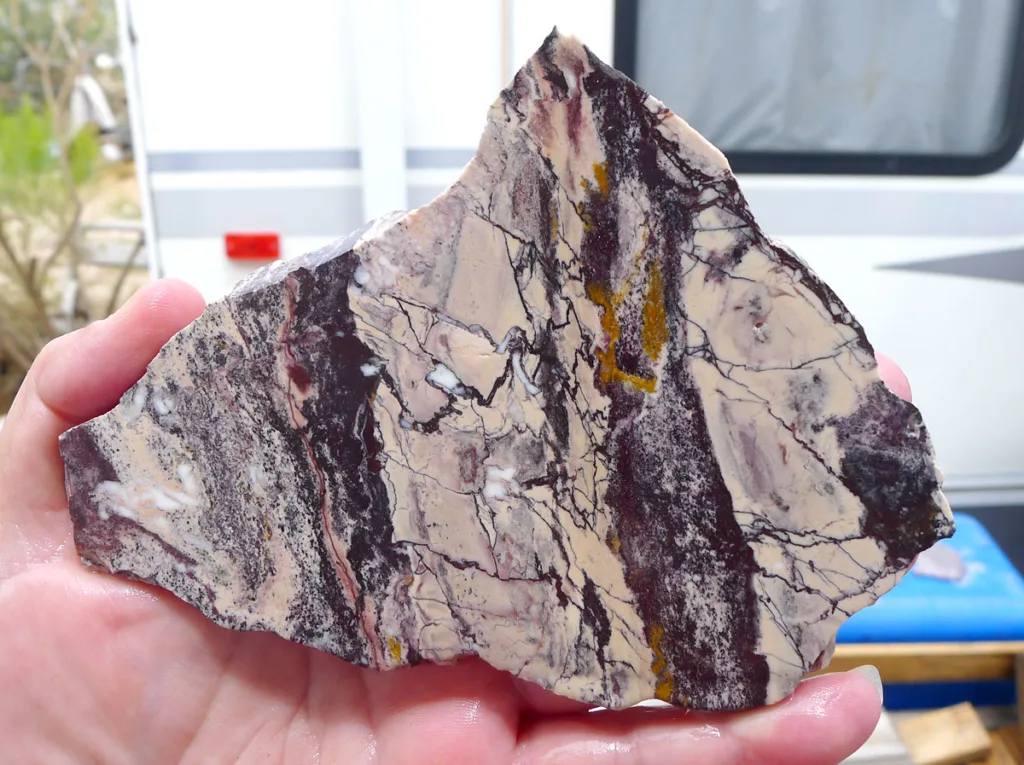
Geologically, Porcelain Jasper forms through a process called silicification, where silica-rich fluids permeate and replace organic material within sedimentary rocks. Over time, this process creates the beautiful patterns and colors characteristic of Porcelain Jasper. It is typically found in regions with volcanic activity or hydrothermal activity, where the conditions are conducive to the formation of silica-rich fluids.
One of the most distinctive features of Porcelain Jasper is its vibrant coloration and intricate patterns. It often exhibits a range of colors including red, orange, yellow, brown, and sometimes even green or blue. These colors are often swirled together in intricate patterns, resembling the appearance of porcelain ceramics hence the name “Porcelain Jasper.” The patterns may vary from subtle swirls to bold, dramatic designs, making each piece of Porcelain Jasper unique and visually stunning.
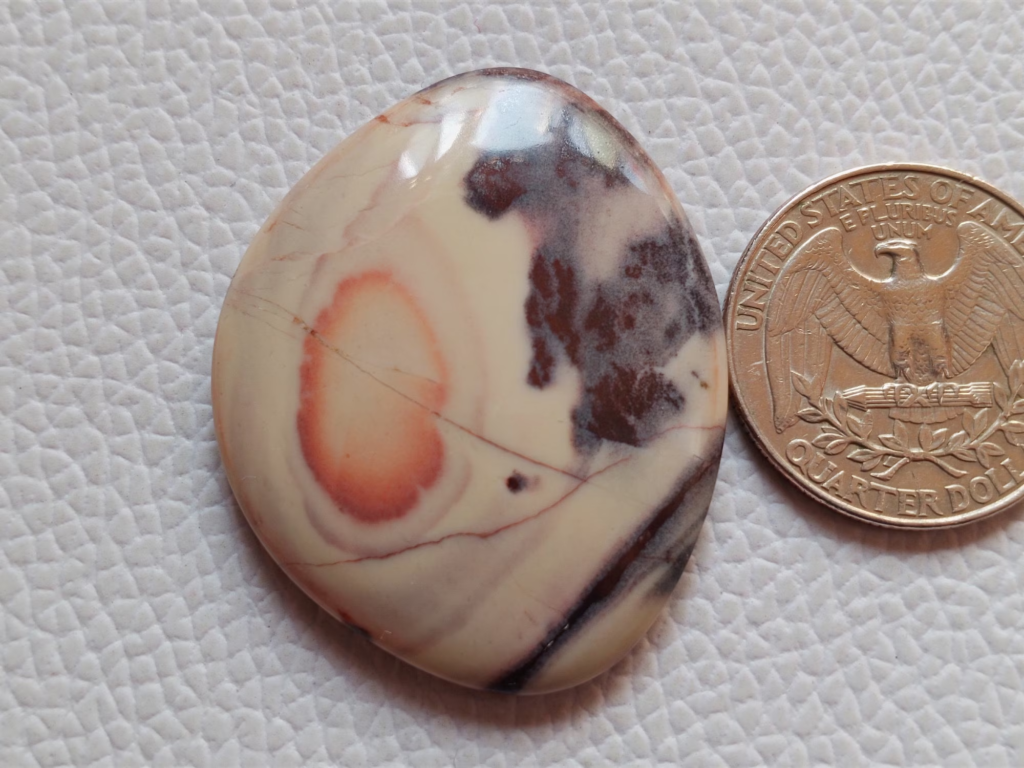
In addition to its aesthetic appeal, Porcelain Jasper is also believed to possess various metaphysical properties. It is said to promote grounding, stability, and inner peace, making it a popular choice for meditation and spiritual practices. Some also believe that Porcelain Jasper can help enhance creativity, intuition, and emotional well-being.
Overall, Porcelain Jasper is a captivating gemstone renowned for its beauty, unique patterns, and metaphysical properties, making it a prized addition to any collection or jewelry piece.
Geological Characteristics
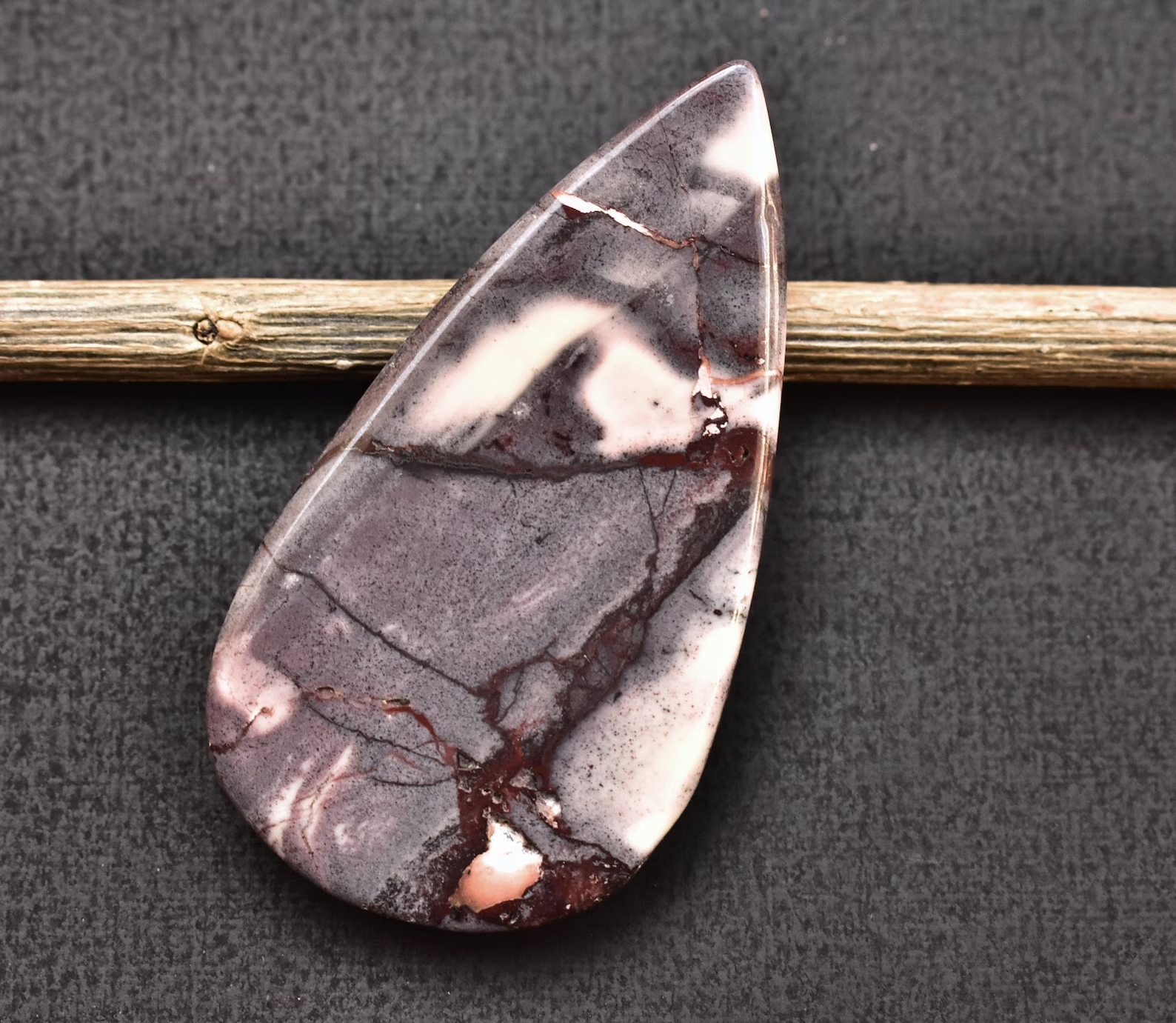
Porcelain Jasper, like other varieties of jasper, forms through a complex geological process known as silicification. This process begins with the deposition of silica-rich fluids, which permeate porous rocks such as limestone, shale, or volcanic ash. Over time, these fluids gradually replace the original minerals and organic material in the rock, preserving their structure while imparting the characteristic colors and patterns of Porcelain Jasper.
The exact composition of Porcelain Jasper can vary depending on the specific geological conditions in which it forms. However, it primarily consists of silica (SiO2), the same mineral that makes up quartz, along with various impurities and trace elements. These impurities are responsible for the wide range of colors observed in Porcelain Jasper, with iron oxide (hematite) often contributing to red, orange, and yellow hues, while other minerals may impart shades of brown, green, or blue.
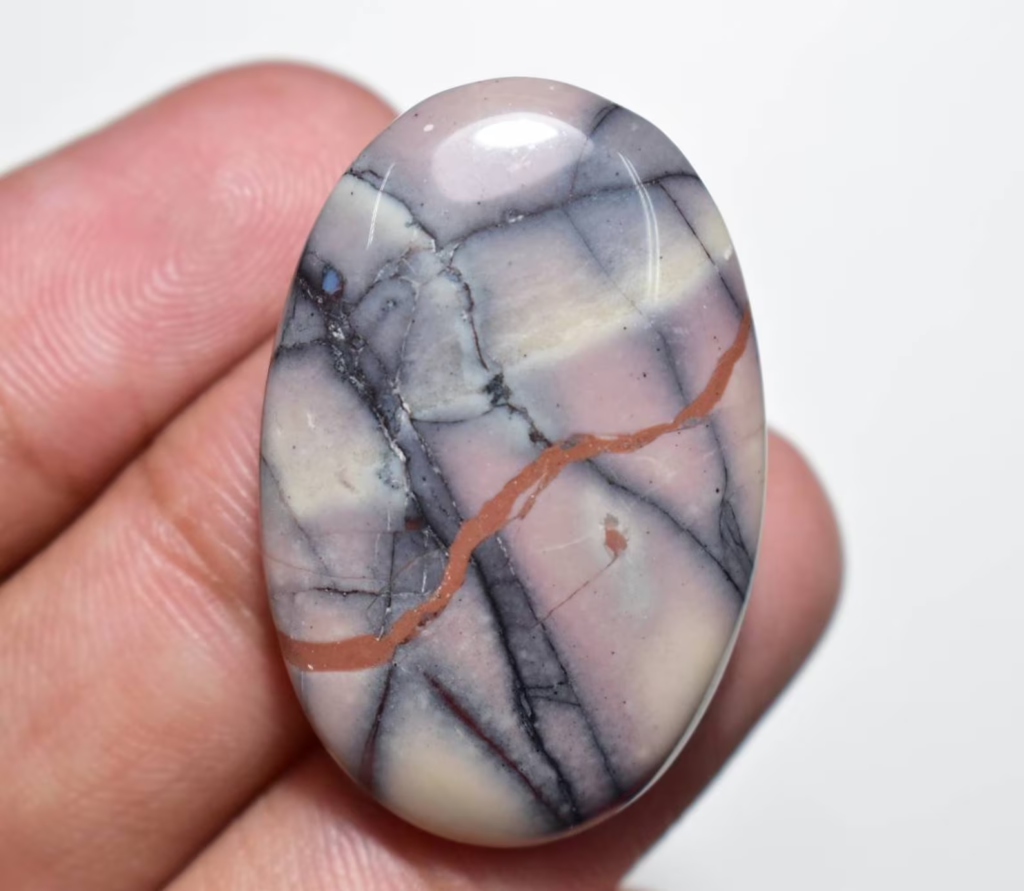
Porcelain Jasper is commonly found in regions with volcanic or hydrothermal activity, where the conditions are conducive to the formation of silica-rich fluids. It can occur in a variety of geological settings, including sedimentary rocks, volcanic tuffs, and hydrothermal veins. Some of the notable occurrences of Porcelain Jasper include areas such as the western United States (particularly Oregon and Idaho), Australia, Madagascar, Mexico, and Brazil.
While Porcelain Jasper is relatively widespread, the quality and abundance of specimens can vary significantly from one location to another. Some deposits may yield large quantities of high-quality material suitable for lapidary use or jewelry making, while others may produce smaller, more irregular pieces. As a result, Porcelain Jasper is highly sought after by collectors and lapidaries for its aesthetic appeal and unique geological characteristics.
Physical Properties of Porcelain Jasper
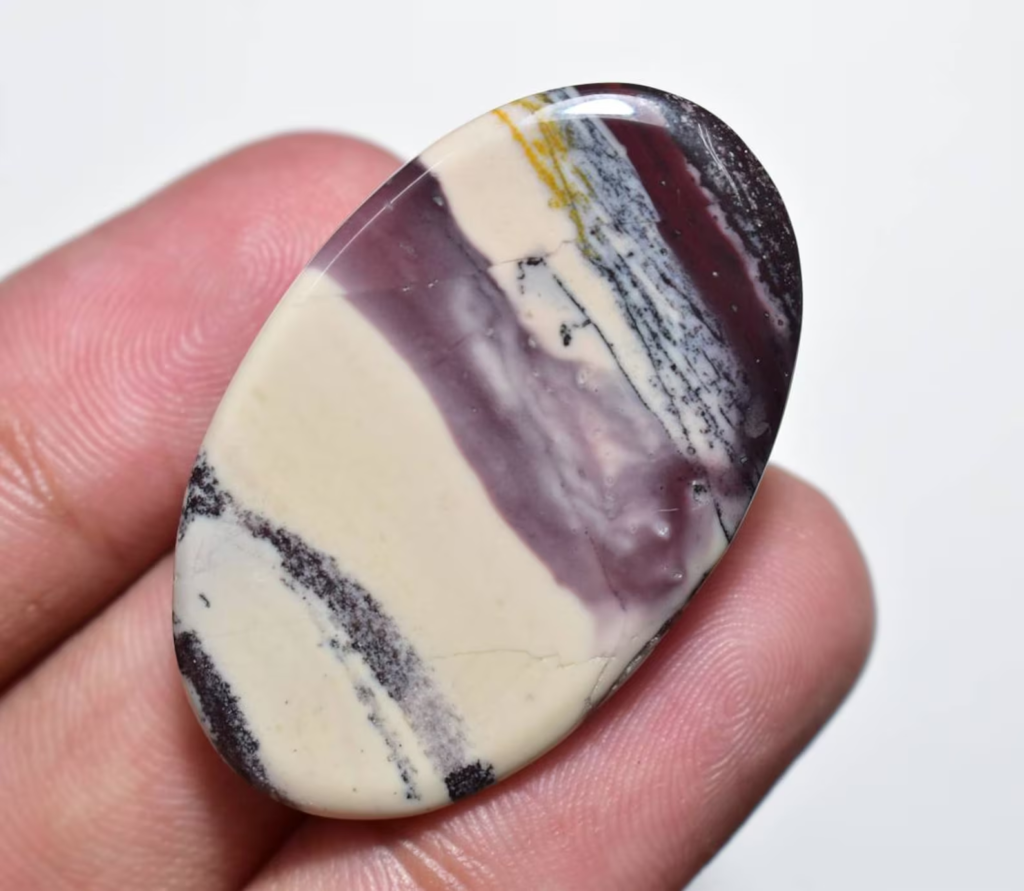
Porcelain Jasper, like other varieties of jasper, possesses certain physical properties that contribute to its unique appearance and suitability for various applications. Here are some of the key physical properties of Porcelain Jasper:
- Hardness: Porcelain Jasper typically has a hardness ranging from 6.5 to 7 on the Mohs scale. This makes it relatively durable and suitable for use in jewelry and ornamental objects.
- Density: The density of Porcelain Jasper varies depending on its composition and porosity. On average, it has a density ranging from 2.5 to 2.9 g/cm³.
- Color: One of the most distinctive features of Porcelain Jasper is its vibrant colors and intricate patterns. It can exhibit a wide range of hues, including red, orange, yellow, brown, green, and blue, often in swirling or banded patterns.
- Luster: Porcelain Jasper typically displays a vitreous to waxy luster, giving it a smooth and polished appearance when polished.
- Transparency: Porcelain Jasper is generally opaque, meaning that light does not pass through it. This opacity contributes to its rich, saturated colors and makes it suitable for use in cabochons and beads.
- Cleavage and Fracture: Porcelain Jasper typically lacks cleavage and instead exhibits a conchoidal fracture, meaning it breaks with smooth, curved surfaces similar to glass.
- Specific Gravity: The specific gravity of Porcelain Jasper varies depending on its composition and porosity but typically ranges from 2.5 to 2.9.
- Other Characteristics: Porcelain Jasper may also display other features such as chatoyancy (cat’s-eye effect) or dendritic inclusions, adding to its visual appeal and desirability for collectors and lapidaries.
Overall, the physical properties of Porcelain Jasper make it a versatile and attractive gemstone suitable for a wide range of decorative and ornamental purposes. Its vibrant colors, unique patterns, and relative hardness make it particularly prized among jewelry designers and collectors alike.
Uses and Applications
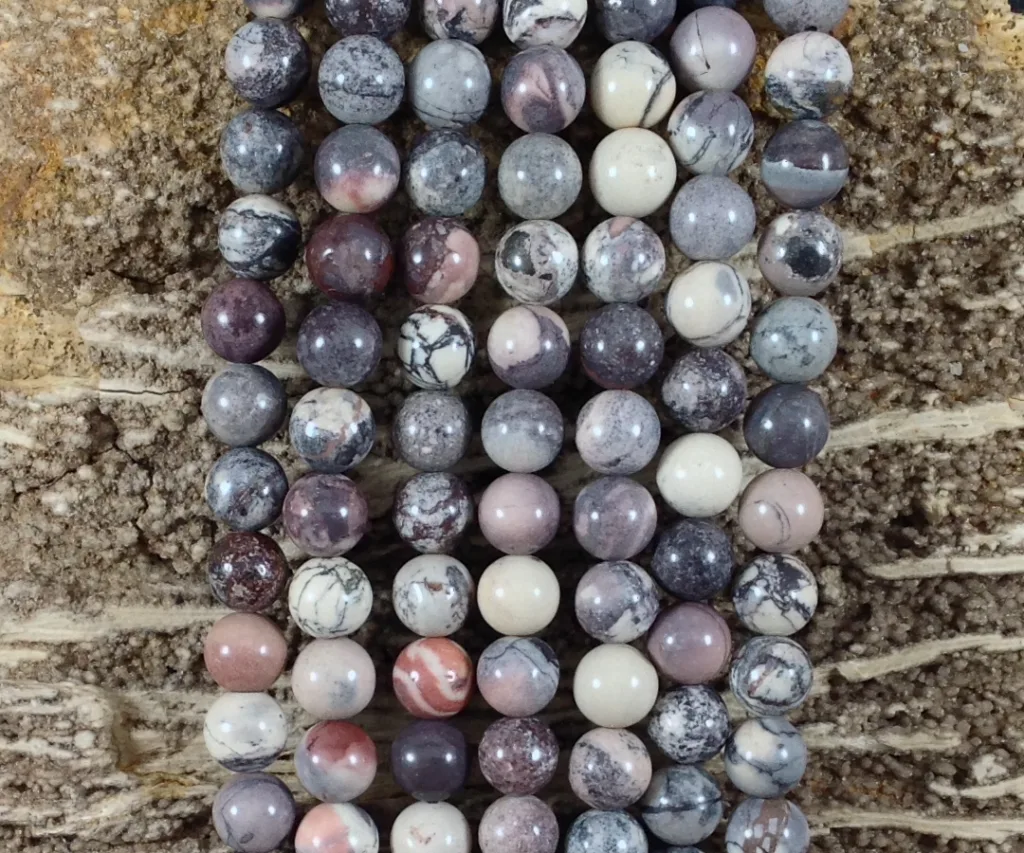
Porcelain Jasper, with its captivating colors, intricate patterns, and relative hardness, finds various uses and applications in both ornamental and metaphysical contexts. Here are some common uses and applications of Porcelain Jasper:
- Jewelry: Porcelain Jasper is often used in jewelry making, where it is fashioned into cabochons, beads, pendants, and other decorative elements. Its vibrant colors and unique patterns make it a popular choice for statement pieces or accent stones in both contemporary and artisanal jewelry designs.
- Ornamental Objects: Beyond jewelry, Porcelain Jasper is also used to create ornamental objects such as carvings, figurines, and decorative items. Its aesthetic appeal and distinct patterns make it well-suited for showcasing in decorative art pieces and sculptures.
- Lapidary Art: Lapidaries and artisans frequently work with Porcelain Jasper to create polished specimens, sculptures, and other lapidary art forms. Its hardness and smooth texture make it ideal for carving and shaping into intricate designs.
- Metaphysical and Healing Practices: Porcelain Jasper is believed to possess various metaphysical properties, including promoting grounding, stability, and inner peace. As such, it is often used in crystal healing practices, meditation, and spiritual rituals. Some also attribute specific healing properties to different colors and patterns of Porcelain Jasper, using them for specific intentions or purposes.
- Home Décor: Porcelain Jasper is sometimes incorporated into home décor items such as coasters, bookends, and tabletop accents. Its natural beauty and vibrant colors can add a touch of elegance and sophistication to interior spaces.
- Collecting and Display: Due to its unique appearance and relative rarity, Porcelain Jasper is highly sought after by collectors of gemstones and minerals. Collectors may seek out specimens with particularly vibrant colors, intricate patterns, or other distinctive features to add to their collections or display in mineral cabinets and showcases.
Overall, Porcelain Jasper’s versatility, aesthetic appeal, and perceived metaphysical properties contribute to its wide range of uses and applications in jewelry, art, décor, and spiritual practices.
Notable Localities of Porcelain Jasper
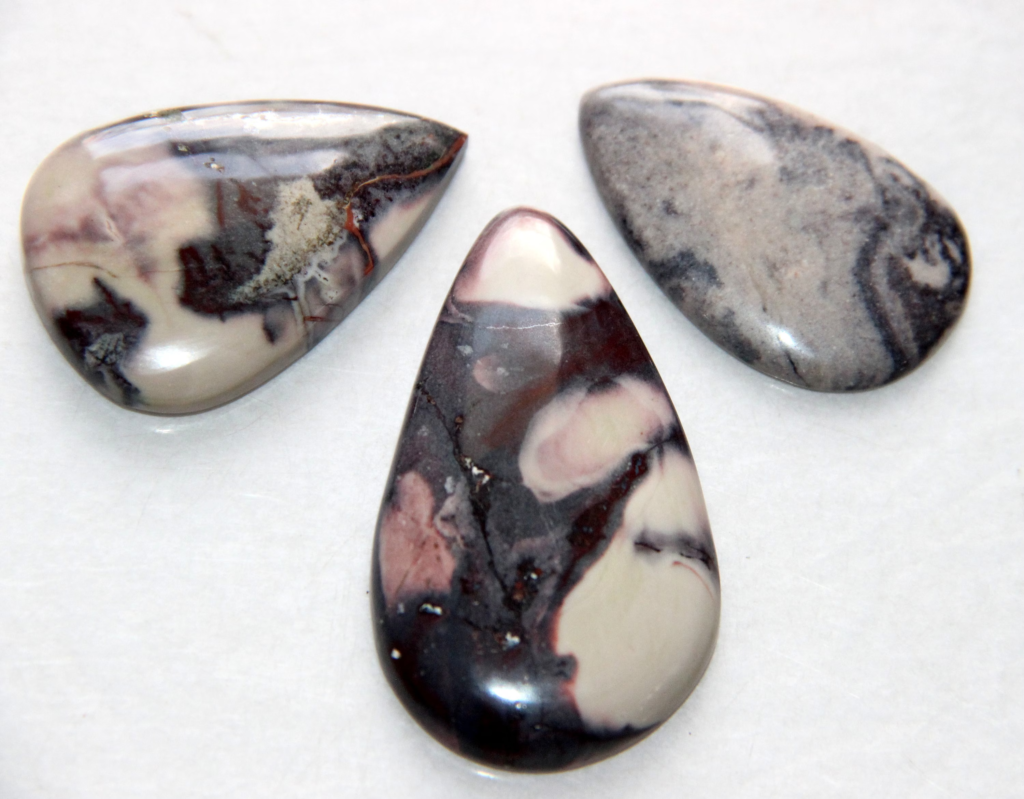
Porcelain Jasper is found in various locations around the world, with some regions known for producing particularly high-quality specimens. Here are some notable localities where Porcelain Jasper is found:
- Oregon, USA: Oregon is renowned for its abundant and diverse jasper deposits, including Porcelain Jasper. The state’s Malheur County, in particular, is famous for producing high-quality Porcelain Jasper with vivid colors and intricate patterns. Other areas in Oregon, such as the Owyhee Mountains, also yield notable Porcelain Jasper specimens.
- Idaho, USA: Similar to Oregon, Idaho is another American state known for its rich jasper deposits. Regions such as the Bruneau Canyon and the Big Lost River Valley are known for producing Porcelain Jasper with distinctive colors and patterns.
- Australia: Australia is home to several jasper deposits, including Porcelain Jasper. The Pilbara region in Western Australia is known for its rich jasper occurrences, including varieties with porcelain-like characteristics. Additionally, parts of Queensland and the Northern Territory also produce Porcelain Jasper.
- Madagascar: Madagascar is a significant source of various gemstones and minerals, including Porcelain Jasper. The country’s diverse geological formations yield a range of jasper specimens, including those with striking colors and patterns resembling porcelain ceramics.
- Mexico: Mexico boasts numerous jasper deposits, with some regions producing Porcelain Jasper of exceptional quality. Areas such as Chihuahua and Sonora are known for their jasper occurrences, including varieties exhibiting vibrant colors and unique patterns.
- Brazil: Brazil is renowned for its rich mineral wealth, and jasper, including Porcelain Jasper, is among the gemstones found there. Brazilian jasper deposits can be found in various states, including Minas Gerais, Bahia, and Rio Grande do Sul.
These are just a few notable localities where Porcelain Jasper can be found. It’s important to note that Porcelain Jasper occurs in various geological settings worldwide, and its occurrence may also be sporadic or localized within specific regions.




































